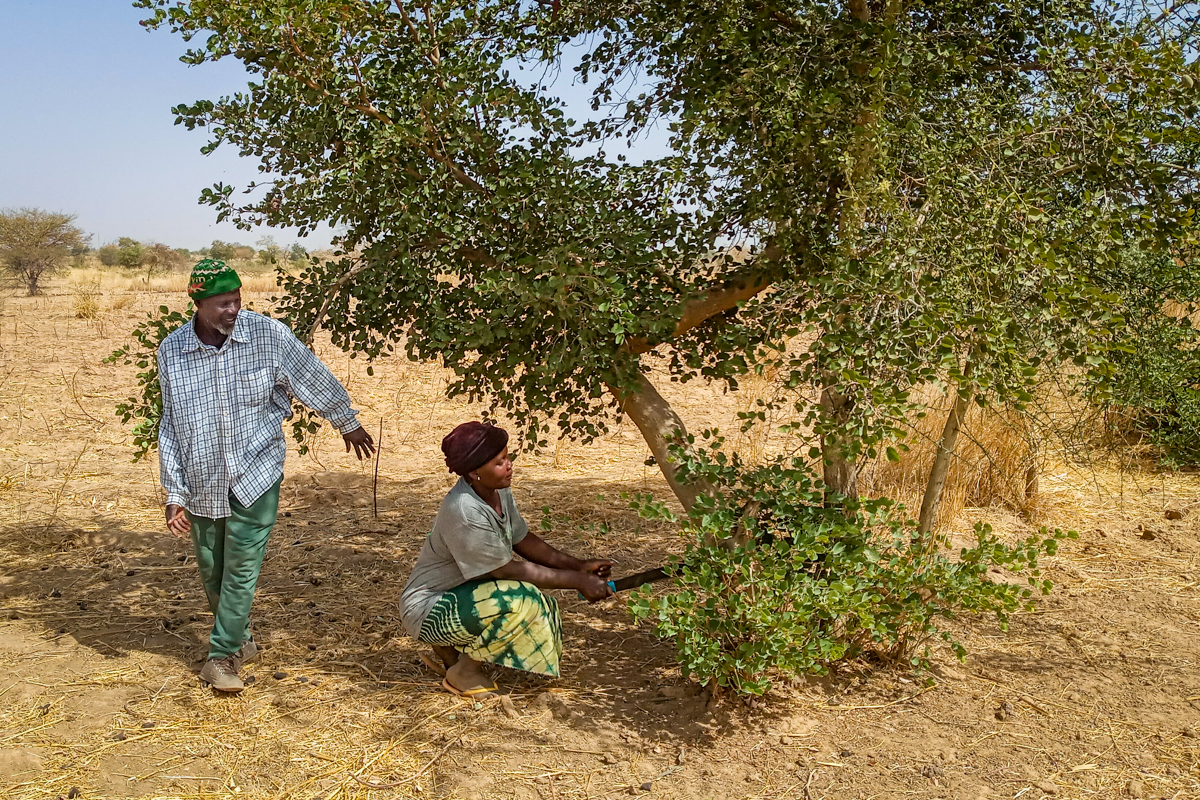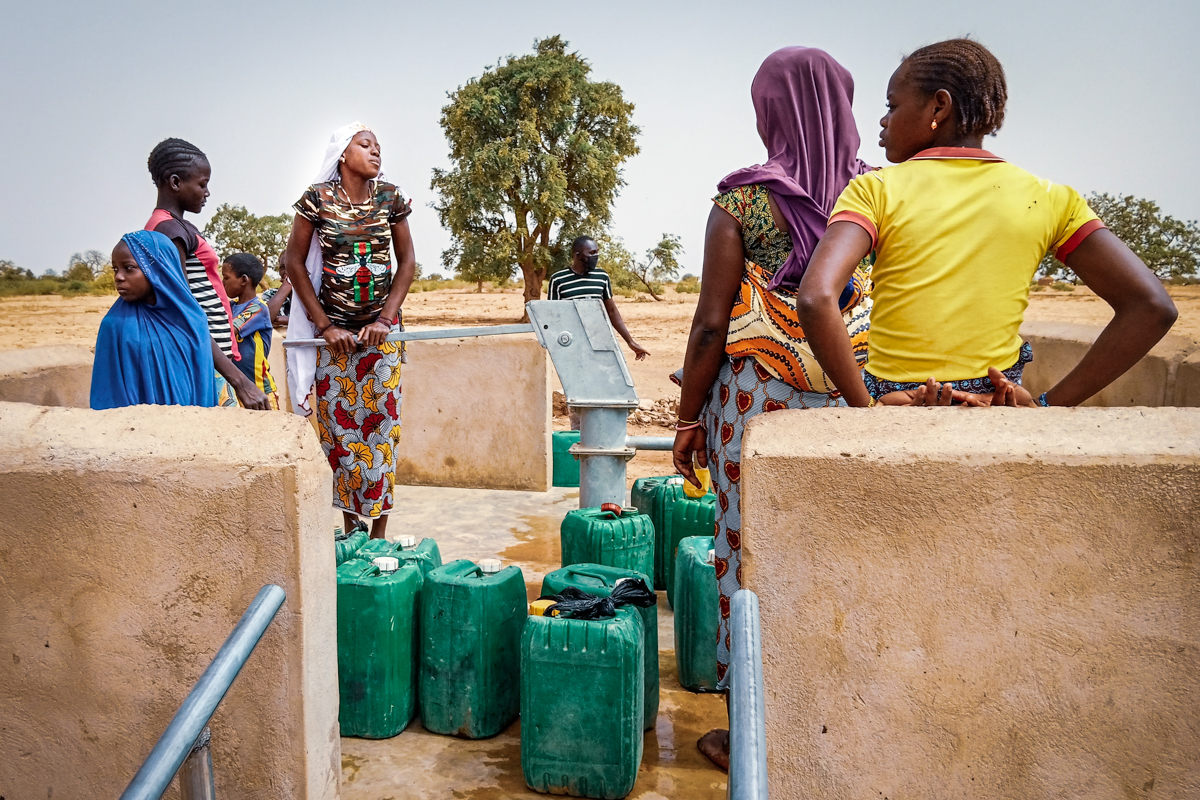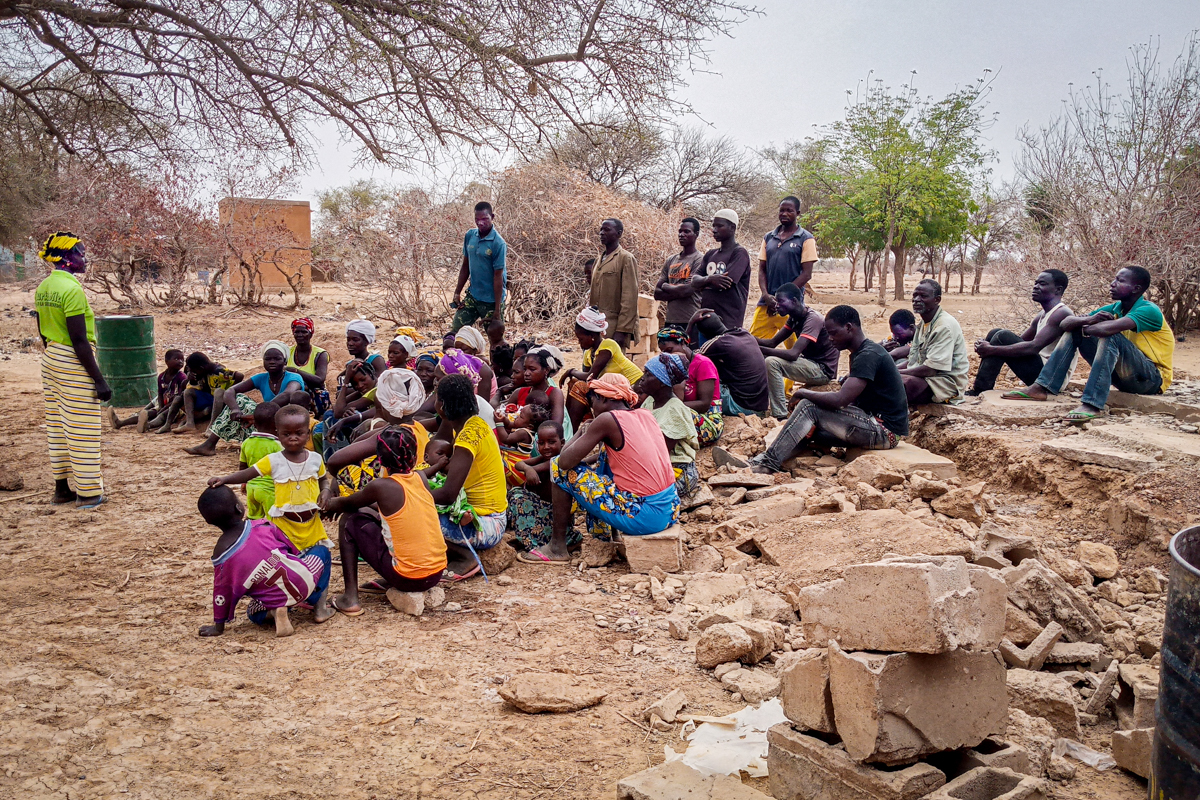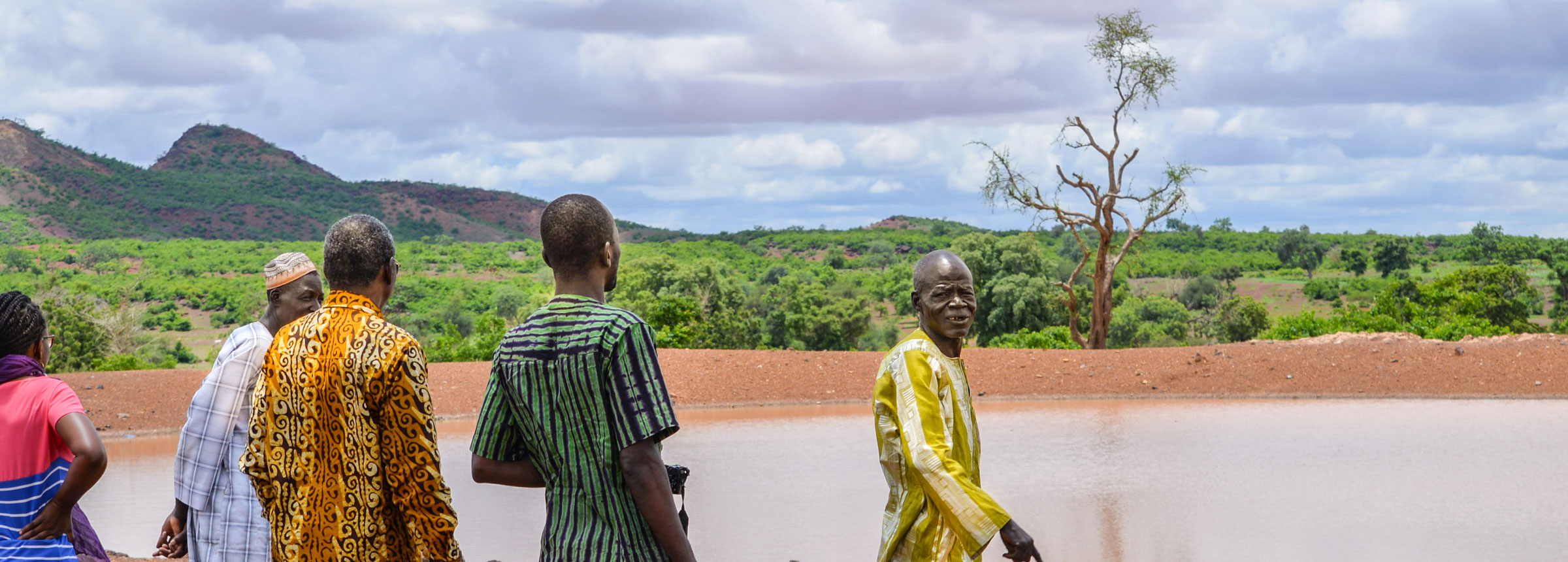
Land, Water, Life: Supporting Communities to Improve Water Security and Resource Management as the Climate Changes
Burkina Faso and Niger face twin humanitarian and climate crises. Policy makers, farmers and community leaders are collaborating to solve them, supported by a USAID activity implemented by Winrock.
The people of Burkina Faso and Niger, two landlocked countries in West Africa, live in one of the hottest regions in the world: the Sahel. These days, it’s getting hotter – and drier – making survival increasingly challenging.
In the arid band just below the Sahara Desert, Burkinabe and Nigeriens are coping with crises both man-made and environmental. With temperatures in the region rising 1.5 times faster than the global average, combined with increasing political instability and conflict, communities are under constant pressure. Prolonged and frequent climate-related disasters including droughts and floods, exacerbated by increasing temperatures, are degrading natural resources in both countries, including lifegiving pastures, water sources and croplands.
With more than 80% of the population of each country reliant on subsistence farming and animal husbandry, such degradation – especially loss of access to water – is now an urgent humanitarian and environmental problem. In Niger alone, herders experience the loss of 100,000-120,000 hectares per year of pastureland to desertification and extreme weather events. Water scarcity, challenges coordinating resource management and policy across levels of government, and limited economic opportunities have contributed to increased poverty, conflicts and extremism in both countries. By the end of 2021, Niger and Burkina Faso saw a combined 1.6 million people internally displaced due to conflict and/or climate-related calamities.
The five-year USAID / TerresEauVie Resilience in the Sahel Enhanced (RISE II) activity, implemented by Winrock beginning in 2019, supports stakeholders in both countries to develop, implement and share solutions to these existential problems, in part by examining what they can see – and what they can’t. With a focus on water security, including studying, mapping and sharing information about dwindling groundwater supplies, the activity is helping to promote enhanced sustainable and productive land use while improving community adaptation and management of climate-induced and other shocks, risks and stresses.
Under USAID’s multi-country RISE II initiative, TerresEauVie (French for land, water, life) seeks solutions by addressing water insecurity and developing strategies to build and sustain agriculture resilience. In response to increased climate stressors and instability in the region, the activity receives periodic additional USAID funding to respond to immediate crises, supplementing support to communes to cope with both environmental and conflict-related risks, including large-scale population displacement caused by terror attacks.

TerresEauVie collaborates with communities, local governments and the private sector to address one of the biggest resource risks: dwindling access to secure water not only for household consumption, but also for agricultural and other livelihood activities. A major component of that work involves helping stakeholders in both countries to identify, map and assess existing water points and access, as well as measuring current groundwater supply and quality.
This year, the U.N.’s annual World Water Day on March 22 focuses on groundwater, which, though invisible, provides “by far the biggest [liquid] freshwater reserve of the blue planet,” says TerresEauVie’s chief of party, Patrick Cantin. Groundwater provides 90% of drinking water for rural populations and 25% of all water extracted for irrigation around the world.
“TerresEauVie supports decision-makers with tools and technical skills to better understand the potential of groundwater for human, livestock and agriculture, but also its limitations, to secure a sustainable freshwater use for future generations in light of accelerating climate change and growing demographics,” Cantin says.
In Burkina Faso, where an estimated 3 million people urgently require access to improved water and sanitation, TerresEauVie helped encourage adoption of the Farmer-Managed Natural Regeneration (FMNR) approach. The techniques help farmers restore depleted cropland and sustainably improve yields. In collaboration with the Ministry of Agriculture, farmers, herders and community members work to protect and advance natural growth of trees and shrubs, which help retain moisture and prevent erosion and nutrient loss. Replanting vegetation not only allows soil more time to absorb scarce rainwater, but increases shade cover and helps limit groundwater evaporation. So far, the 160 FMNR practitioners trained in the country’s Centre-Nord region are witnessing steady vegetative cover increases, along with other improved practices, helping regenerate land, reduce runoff, revive fertilization and boost harvests.
“The situation is difficult for all farmers,” says Moustapha Ouedraogo, an active member of the local water committee in Barsalogho village, Burkina Faso. As an FMNR participant, Ouedraogo says he was “able to acquire precise knowledge of the techniques and I immediately put them into practice in one of my fields when I returned to my village. Next year, I will extend FMNR practice to my other fields. As a relay producer [local trainer], I was also able to train 40 producers in my village. They were not difficult to convince, and I could show them the different techniques directly in their fields. Then I went back to visit them to provide more advice related to what I was seeing. The more people who practice FMNR, the more the soils will be protected, so our fields will get restored and productive again and we will be able to live better.”

Burkinabe producers shared their FMNR education with an additional 1,113 people throughout the Tougouri, Yalgo and Barsalogho. With relay producers conducting advisory and follow-up visits, FMNR techniques have so far been applied to a total of 2,300 hectares.
TerresEauVie helps community members learn about available groundwater supplies, and builds communication between water users at the local and governmental levels.
Now in its third year, TerresEauVie has conducted groundwater assessments covering 2,405 water points across 142 villages in the Maradi and Zinder regions in Niger. In Maradi, the study enabled the Departmental Directorate for Hydraulics and Sanitation and the Guidan Roumji Local Water Committee to co-design a new water management developmental plan, providing administrators with precise data on water resources and distribution in the watershed for the first time. Following the studies, the Guidiguir commune in Zinder began promoting improved sanitation activities around its own water points to prevent contamination and improve water quality.
The Niger groundwater study’s technical committee included the Abdou Moumouni University of Niamey and the universities of both Maradi and Zinder, with technical and data support from a diverse coalition that includes SERVIR, an innovative program between USAID and the National Aeronautics and Space Administration that uses satellite data and geospatial technology to co-develop solutions that improve resilience and sustainable resource management in Africa and on other continents.
In all, the activity led groundwater studies in 21 communes across the countries: 18 in Niger and three in Burkina Faso, providing reliable new data that helps guide policy makers as they steer resources into water protection and supply programs.

“We know the worth of water when the well is dry.” –African proverb
TerresEauVie also empowers communities, women and youth, to engage directly in water and natural resource management. In Niger, for example, the Goulbin Maradi Watershed once suffered from poor communication between national-level decisionmakers and local-level water user associations. In partnership with the Permanent Secretariat for Integrated Water Resource Management, TerresEauVie helped develop the country’s first Water Agency, which is now helping to provide more detailed guidance and information to local water user association leaders and communes.
“This was a major milestone in equipping Niger with structures capable to protect and distribute water among communities in a sustainable way, countering water scarcity,” says Alex Loken, senior program manager with Winrock’s Agriculture, Resilience and Water (ARW) team.
Along with other USAID RISE II partners, the World Food Programme and government agencies, TerresEauVie facilitated development of important administrative agreements in both countries, known as Local Conventions (LC), which establish sustainable, community-based management guidelines that protect natural resources and prevent conflicts.
In the Mazamni commune in Niger, where four LCs are now in place, the 460-hectare Kouyikam grazing area, used daily by up to 500 cows, sheep and goats, once experienced an average of 11 disputes a year between farmers and herders from surrounding villages. After the conventions were developed with inputs from all stakeholders, along with ongoing support for negotiation and information flow between communities, local leaders are now able to educate communities on collaborative water and land management, including widening grazing corridors, reopening obstructed corridors, and planting boundary edges. In a single year, LCs have cut the number of Mazamni farmer-herder conflicts in half, resulting in improved water access for cattle without encroaching on crops. Ten additional conventions are now in development in Niger.
“Effectively managing scarce water resources for sanitation, hygiene, crops and livestock equitably is central to any climate adaptation strategy,” says Aaron Sundsmo, Winrock’s senior director of ARW. “In the process, TerresEauVie is empowering vulnerable populations to mitigate shocks and stressors while pursuing pathways out of poverty and minimizing potential for conflicts.”
Related Projects

USAID TerresEauVie Activity
The USAID TerresEauVie Activity enhances social and ecological risk management systems in Africa’s Sahel region through three components: improved water security, enhanced sustainable productive land use, and improved management of shocks, risks and stresses. The activity improves the availability of, access to and safe use of adequate, reliable water and land resources for the health, […]
